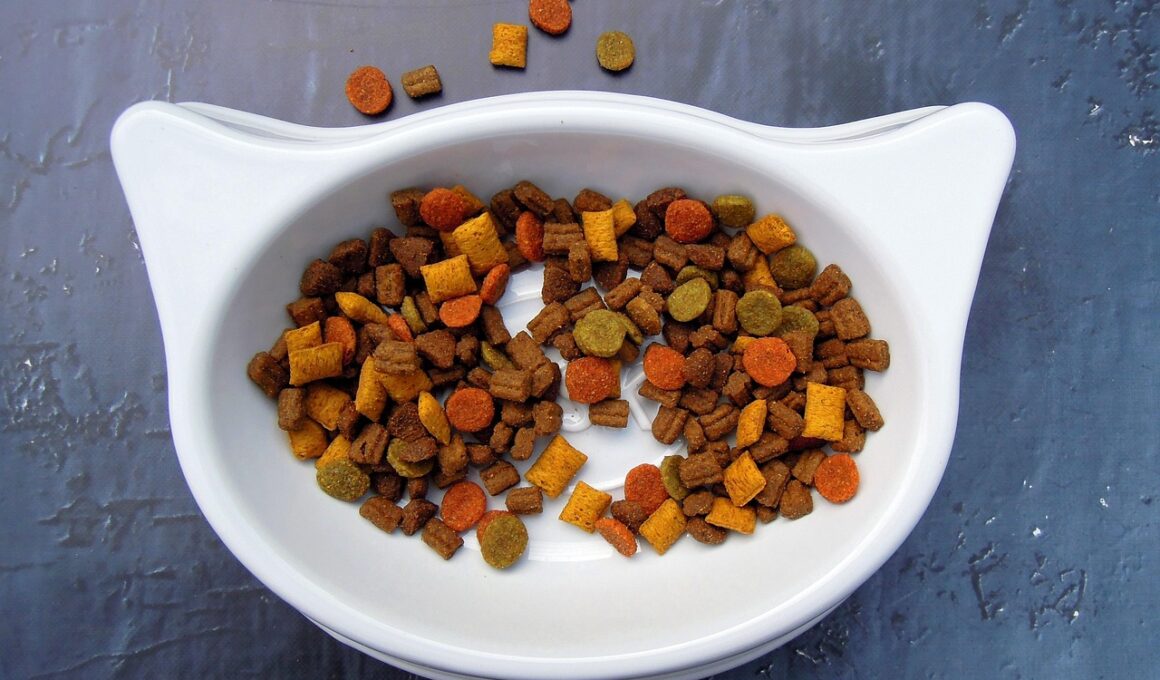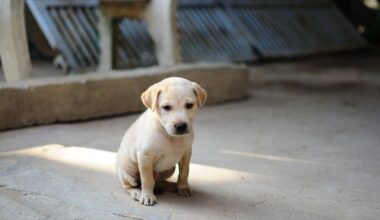How Color and Design of Bowls Affect Your Cat’s Eating Habits
When considering the best food bowls for your cat, it’s crucial to evaluate the impact of color and design. Cats are sensitive creatures, and their preferences can significantly influence their eating habits. Aesthetic elements like color can affect a cat’s mood and appetite, thus making it essential to choose wisely. For example, studies suggest that blue and green hues are calming, while red and orange might stimulate activity. This can directly translate into their eating behavior. Moreover, bowl shapes play a role; shallow, wide bowls often work best for cats, helping them eat comfortably without whisker stress. This stress occurs when a cat’s whiskers rub against the sides of deep bowls. In addition to colors and shapes, the material matters as well. Stainless steel, for example, is durable and easy to clean, preventing germs from developing. Ceramic bowls can offer fun designs but need to be checked for lead. Ultimately, ensuring that the bowl appeals to your cat’s aesthetic preferences can enhance their mealtime experience and reduce fussiness at feeding time.
Another factor to consider is how the design of feeding tools can affect a cat’s behavior during mealtime. Elevated feeders, for example, encourage more natural eating postures, which can lead to more comfortable eating experiences. Many cats prefer to eat at a height that places their head in alignment with their bodies. This design helps minimize neck strain and supports a better digestive process. Additionally, some feeding tools come with adjustable heights, catering to a variety of cat sizes. Furthermore, the presence of non-slip features on bowls can prevent spills, which can annoy cats and disrupt their feeding habits. Cats generally have instinctual behaviors; they prefer secure, stable surfaces. Experimenting with different feeding tool designs can help identify what your cat prefers. Consider incorporating interactive feeders that challenge your cat and stimulate their hunting instincts. These feeders often have puzzles that reward them with food as they figure them out, adding excitement to mealtime. By recognizing your cat’s preferences in design and functionality, you can create a more enjoyable feeding environment that promotes healthy eating habits.
The Role of Material in Food Bowls
Choosing the right material for your cat’s food bowl is as essential as selecting the right color and shape. Bowl material can influence not only your cat’s eating preferences but also their health. Stainless steel is often recommended because it is durable, non-porous, and easy to clean. This makes it a preferred option for many cat owners. However, it’s essential to ensure that any stainless steel bowl does not contain harmful chemicals. Ceramic bowls can be visually appealing and come in various designs, but they should be checked for lead and glaze safety. Plastic, while lightweight, is less recommended because it scratches easily, harboring bacteria and causing health issues. Some cats can also develop an allergy to plastic, leading to irritation or infections. When evaluating materials, consider those that do not retain odors and are dishwasher safe for easy cleaning. The choice of material directly impacts hygiene and longevity, making it a crucial aspect to consider when selecting your cat’s feeding tools. Ultimately, prioritizing safe material will ensure your feline friend’s health and well-being during mealtime.
The choice of bowl design can also affect the way cats interact with their food during feeding times. For instance, cats naturally prefer to see their surroundings while eating, so transparent or semi-transparent bowls can provide a sense of security. This feature can help to enhance focus on their meals and lower any anxiety that comes from not being aware of potential threats. Moreover, incorporating features like anti-slip bottoms can create a less stressful mealtime experience by preventing the bowl from sliding around. Additionally, using bowls that are easy to tip or spill can frustrate cats, leading to an aversion to eating altogether. Some cats may also prefer deeper dishes if they have long whiskers, allowing them to access their food without discomfort. Experimenting with diverse bowl heights and depths can enable you to find a design that suits your kitty’s unique preferences. Pay attention to behavioral cues; cats that seem more relaxed and less hesitant are likely enjoying their feeding experience. Adjusting variables in bowl design can lead to improved eating habits and ultimately greater satisfaction during meals.
Psychological Effects of Color and Feeding
Colors have profound psychological effects on both humans and pets. For your cat, this may manifest in their mood and eating habits. Research has shown that warm colors, such as red and yellow, can increase energy and may excite your cat, while cooler colors like green and blue can make them feel calm. Choosing bowls with colors aligned to your cat’s personality is vital. For shy or anxious cats, opting for softer hues might make them feel more secure during feeding times. Additionally, colorful patterns can stimulate their curiosity, encouraging them to approach and engage with their food. Vibrant bowls, potentially adorned with fun designs, can make mealtimes visually stimulating, making your cat associate feeding time with enjoyment. In contrast, stark colors may repel some cats, leading to resistance during meals. Over time, these reactions can lead to feeding aversions or stress. This makes it essential to observe their preferences and adapt the feeding environment accordingly. Investing time in understanding the psychological impact of colors can improve your cat’s overall well-being and enhance their eating experiences.
In conclusion, the color, design, and material of food bowls can considerably impact your cat’s overall eating habits and well-being. As a responsible pet owner, you want to ensure that every element of your cat’s feeding experience is pleasant and comfortable. By taking the time to select the right bowl, you can encourage positive eating behaviors and create a nurturing environment. Consider spending time introducing new bowls gradually to observe how your cat reacts to different materials and colors. Monitor their behavior closely and make adjustments accordingly; ensure they are content and relaxed during meals. An interactive feeding tool can also add an element of fun while promoting mental stimulation. Eventually, creating a symbiotic relationship between your cat’s design preferences and their natural instincts will lead to better health and satisfy their behavioral needs. Keeping an eye on your cat’s preferences can also provide insights that allow you to adjust their feeding habits over time. As every cat is unique, understanding their behaviors is essential for a harmonious feeding routine. Ultimately, observing and nurturing your cat’s eating habits is vital for their happiness and health.
Lastly, remember that every cat has individual preferences that can evolve, requiring regular evaluation of their eating conditions. Openly observing your cat’s behavior during feeding times will yield valuable insights into what appeals to them the most. Presenting food in appropriately designed bowls that suit their needs can significantly affect their willingness to eat. Experiencing varied feeding scenarios may encourage them to explore their preferences further. Explore different designs, colors, and materials to create a personalized feeding experience. You can also test various placement options around your home to discover the most comfortable locations for your feline prince or princess. By closely monitoring their responses, you can ensure that they receive their meals in a manner that aligns with their instincts. Adapting to your cat’s preferences shows commitment to their health and fosters a happy feeding routine. Making informed decisions based on sound principles guarantees a satisfying mealtime for your furry companion. Remember, a happy cat is a healthy cat, and their eating habits can greatly influence their overall joy in life.



